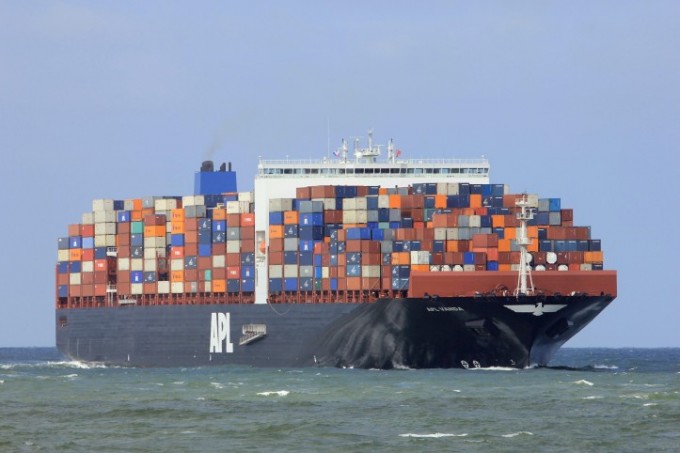By Mike
Wackett
15/02/2016

The 13,892 teu APL Vanda was refloated from Bramble Bank in the early hours of
yesterday after being deliberately grounded following a loss of power.
The vessel was on its way into the
UK south coast port of Southampton on Saturday evening, when, said the
Maritime and Coastguard Agency (MCA), the ultra-large container vessel (ULCV)
had “executed a controlled grounding”.
Local reports said that the ship had
been grounded by its stern with half of its rudder remaining out of the water.
Eight tugs successfully pulled the
ULCV off the sand bar shortly after midnight and towed it into the port
for inspection.
The 150,000dwt vessel was en route
from Le Havre with a pilot aboard when an “engine blackout” occurred,
putting the ship at the mercy of strong currents and high
winds – making a grounding the only option.
Bramble Bank is an arrowhead-shaped
piece of sand off Cowes, Isle of Wight, that is uncovered at low tide and
can also be affected by prolonged easterly winds. It is a well known hazard for
shipping in the Solent.
However, in extreme cases grounding
on the sand bar can prevent a disabled ship from drifting and the car-carrier Hoegh Osaka beached itself there last year when it began listing
dangerously after shortly after departing Southampton.
The big danger for ships on the
Bramble Bank is that they will sink deeper into the sand with each tide.
Further complications for theAPL Vanda were
prevented by the swift action of the port in sending tugs to the scene.
The APL Vanda grounding is the second casualty within a week
involving an ULCV in North Europe. The 19,100 teu CSCL Indian Ocean was deliberately grounded in the River Elbe after
losing power on its approach into the port of Hamburg.
Investigations are continuing as to
why the CSCL ship lost propulsion, and a contact at the carrier’s Hamburg
office remained tight-lipped whenThe Loadstar spoke to
him last week.
Suffice to say, these
state-of-the-art ships should not be breaking down. Indeed, if the
circumstances had been different – for example, if there had been a
loss of power while the ship was in heavy weather – it could have
been catastrophic.
Moreover, if an ULCV becomes
grounded there are no facilities immediately available that can discharge
containers from these behemoths in order to lighten them. According to
a Loadstar source, theCSCL Indian Ocean salvors
had ascertained that the nearest floating crane with sufficient height and
reach to offload its containers was in Canada.
It is a concern that the general
shortage of salvage facilities to tackle marine disasters is compounded by the
absence of suitable equipment that can deal with the new breed of megaships
No comments:
Post a Comment